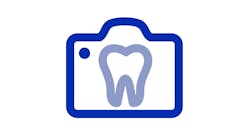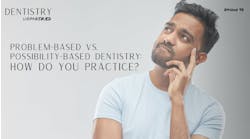The cloud is often considered the best way to provide security for your dental practice. Here are six reasons why.
Despite the news we hear every day, I remain convinced that the cloud is better at providing security for dental practices. Is it perfect? No, because there isn’t a perfect system, but the security is better. Here are six reasons why the cloud is the data security champion.
1. Better physical security
It’s of interest to note that one of the most frequent reasons practices file data breaches with the office of the Secretary of Health and Human Resources is theft. A deadbolt and alarm system are not huge deterrents to thieves who can quickly turn over computer hardware for drug money. In contrast, data on the cloud is stored (or should be stored) at a professional data center. The data center is protected by perimeter fencing, 24-hour on-site security, video surveillance, and more. Nobody gets in or out unless they are specifically authorized to do so.
2. Better defense against ransomware
Some doctors do a better job of protecting their servers than others. Employing the help of an IT professional can provide additional defense against ransomware. But your server can be compromised even when you’ve paid for help. With the cloud, your data is protected around the clock by software, systems, processes, and people whose number one task is to thwart, prevent, and monitor for unauthorized intrusion. Does that mean the data is impervious to attack? No, but it does mean better defense against the dark side.
3. Better virus protection
Your local hardware contracts viruses and malware because humans are downloading items from the Internet to a local hard drive. Despite memos and instructions to your team, the malware guys are becoming more deceptive and creative in downloading their goods to your hardware. With your data on the cloud, your team can’t download, for example, cat videos to the servers that house your data. As a result, your data will never be compromised by malware.
4. Better data backup
If there’s a server in your practice, most likely your data is backed up daily. Chances are the data won’t back up like you think it should and you’ll lose at least one day of data. On the cloud, and with Curve Dental as an example, your data is backed up after every change in data, so there’s a better chance you won’t lose any data. Better still, with your data on the cloud, you never have to worry about backup tapes, hard drives, thumb drives, HIPAA security violations, or backup schedules.
5. Better data maintenance
With client-server software, there’s a good chance the database will become corrupted. This happens so often with the most popular software that a database utility is shipped with the software to rebuild it! Guess who gets to rebuild the database? Are you a database administrator, or are you a dentist? With your patient data on the cloud, you never have to worry about silly things like corrupted databases.
6. Better use of dollars
With cloud-based dental software, you pay a monthly service subscription. When you consider all the services you receive, the value proposition becomes that much stronger - comprehensive management software (billing, charting, scheduling, imaging), 24/7 customer service, upgrades, data backup, electronic services, appointment reminders (via text and e-mail), patient portal, morning huddle dashboards, online payments, and online forms, with more being added all the time.
Calculate your own ROI
Every practice is different. How you manage your practice is going to differ from your colleagues across the hall or down the street. I can only speak in general terms. I recently created a worksheet, Traditional Software versus Cloud-based Software: Calculating Your Personal ROI, that will give you a better snapshot of how the cloud can help you spend your dollars more efficiently.
Take careful note: Spending your dollars more efficiently may or may not translate into spending fewer dollars. In some instances, the cloud might mean you’ll spend more dollars than you do now, but chances are you’ll get more value for the increase in dollars. In some instances, you might pay less, which makes the decision much easier. And finally, in some cases, the difference in costs might be a wash, in which case you may spend the same amount of money for better technology.
In any event, you’ll never know until you do the math. Feel free to download the worksheet at go.curvedental.com/ROI-worksheet-DE.
Andy Jensen has been in the dental software business since 1992. He is vice president and chief marketing officer at Curve Dental, a software development house that delivers 100% cloud-based management software for dentists. Andy recently completed a book, How to Build the Killer Practice on the Cloud, that can be downloaded at curvedental.com/killer-practice-de.







